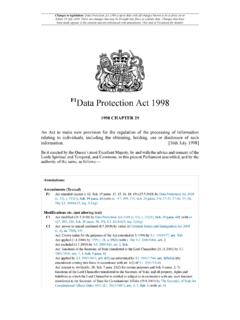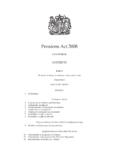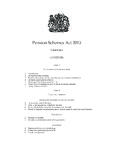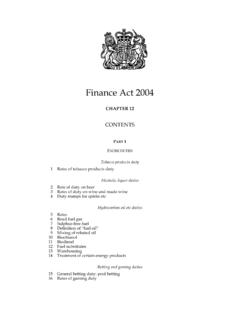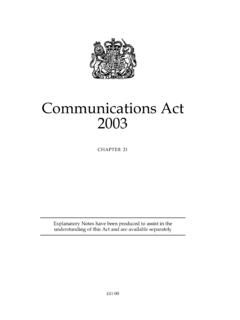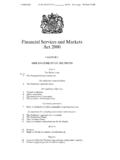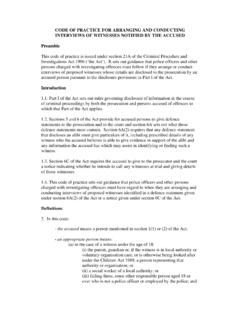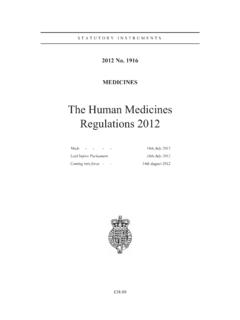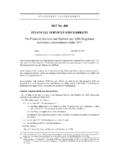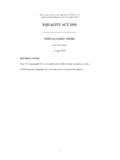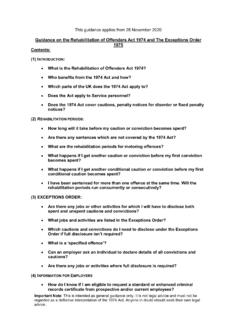Transcription of COMPANIES ACT 2006 - Legislation.gov.uk
1 These Notes refer to the COMPANIES Act 2006 ( ) which received Royal Assent on 8 November 2006 1 COMPANIES ACT 2006 EXPLANATORY NOTES INTRODUCTION 1. These explanatory notes relate to the COMPANIES Act 2006 ( ) which received Royal Assent on 8 November 2006 . They have been prepared by the Department of Trade and Industry (DTI) in order to assist the reader in understanding the Act. They do not form part of the Act and have not been endorsed by Parliament. 2. The notes need to be read in conjunction with the Act. They are not, and are not meant to be, a comprehensive description of the Act.
2 So where a section or part of a section does not seem to require any explanation or comment, none is given. Further, where provisions in the Act restate what was in the COMPANIES Act 1985 (the 1985 Act) an explanation is not always given, except to the extent required to explain changes to associated provisions. BACKGROUND 3. The UK was one of the first nations to establish rules for the operation of COMPANIES . Today our system of company law and corporate governance, setting out the legal basis on which COMPANIES are formed and run, is a vital part of the legal framework within which business is conducted.
3 As the business environment evolves, there is a risk that the legal framework can become gradually divorced from the needs of COMPANIES , in particular the needs of smaller private businesses, creating obstacles to ways that COMPANIES want and need to operate. 4. In March 1998, the DTI commissioned a fundamental review of company law. An independent Steering Group led the Company Law Review (CLR) whose terms of reference required them to consider how core company law could be modernised in order to provide a simple, efficient and cost effective framework for British business in the twenty-first century.
4 After extensive consultation with interested parties, the CLR presented its Final Report to the Secretary of State for Trade and Industry on 26 July 2001. The report contained a range of recommendations for substantive changes to many areas of company law, and a set of principles to guide the development of the law more generally, most notably that it should be as simple and as accessible as possible for smaller firms and their advisers and should avoid imposing unnecessary burdens on the ways COMPANIES operate. 5. Many of the provisions of the Act implement CLR recommendations.
5 The Government set out and consulted on its intentions in this regard in the White Papers Modernising Company Law (July 2002) and Company Law Reform (March 2005). The 2005 White Paper included approximately 300 draft clauses and described in detail the policy intention for other areas. Further clauses were made publicly available for comment in July, September and October 2005. The COMPANIES Bill, then titled the Company Law Reform Bill, was introduced to the House of Lords on 4 November 2005. These Notes refer to the COMPANIES Act 2006 ( ) which received Royal Assent on 8 November 2006 2 OVERVIEW OF THE STRUCTURE OF THE ACT 6.
6 The general arrangement of the Act is as follows: PART SUMMARY Parts 1 to 7 The fundamentals of what a company is, how it can be formed and what it can be called. Parts 8 to 12 The members (shareholders) and officers (management) of a company Parts 13 and 14 How COMPANIES may take decisions Parts 15 and 16 The safeguards for ensuring that the officers of a company are accountable to its members Parts 17 to 25 Raising share capital, capital maintenance, annual returns, and company charges Parts 26 to 28 Company reconstructions, mergers and takeovers Parts 29 to 39 The regulatory framework, application to COMPANIES not formed under the COMPANIES Acts and other company law provisions Parts 40 to 42 Overseas disqualification of directors.
7 Business names and statutory auditors Part 43 Transparency obligations Parts 44 to 47 Miscellaneous and general SUMMARY OF LEGISLATIVE CHANGES 7. The company law provisions of the 2006 Act (Parts 1 to 39) restate almost all of the provisions of the 1985 Act, together with the company law provisions of the COMPANIES Act 1989 (the 1989 Act) and the COMPANIES (Audit, Investigations and Community Enterprise) Act 2004 (C(AICE) Act 2004). Paragraphs 9 and 10 below contain details of the provisions that remain in those Acts. The company law provisions also codify certain aspects of the case law. 8.
8 Tables of origins and destinations are available that show the origins of the company law provisions of the Act by reference to enactments in force on 8 November 2006 . The tables identify where provisions of the existing law have been re-enacted with or without changes and where provisions of the new law have no predecessor or are fundamentally different from their predecessors. These Notes refer to the COMPANIES Act 2006 ( ) which received Royal Assent on 8 November 2006 3 9. Of company law provisions in the Acts referred to in paragraph 7, the only ones that remain are those on investigations that go wider than COMPANIES (Part 14 of the 1985 Act) and the provisions on community interest COMPANIES in Part 2 of the C(AICE) Act 2004.
9 10. The non-company law provisions in those Acts that remain are: a) Part 18 of the 1985 Act (floating charges and receivers (Scotland)), b) Part 3 of the 1989 Act (powers to require information and documents to assist overseas regulatory authorities), c) Section 112 to 116 of the 1989 Act (provisions about Scottish incorporated charities) d) Part 7 of the 1989 Act (provisions about financial markets and insolvency) e) Schedule 18 of the 1989 Act (amendments and savings consequential upon changes in the law made by the 1989 Act) f) Sections 14 and 15 of the C(AICE) Act 2004 (supervision of accounts and reports), and g)
10 Sections 16 and 17 of the C(AICE) Act 2004 (bodies concerned with accounting standards etc). 11. In non-company law areas the Act makes amendments to other legislation , in particular the Financial Services and Markets Act 2000, and also makes new provision of various kinds. The main areas in which provision of this kind is made are: overseas disqualification of company directors (Part 40), business names (Part 41) replacing the Business Names Act 1985, statutory auditors (Part 42) replacing Part 2 of the COMPANIES Act 1989, and transparency obligations (Part 43) amending Part 6 of the Financial Services and Markets Act 2000.
